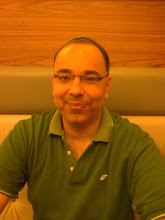Nobel prize winner Orhan
Pamuk is a writer I’ve been meaning to read for a long time and I’ve decided to
start off with one of his more recent books THE MUSEUM OF INNOCENCE.
My impression of Pamuk prior
to reading him based on reviews and conversations who’d read his books was that
his writing was in the magic realism vein similar to Italo Calvino, Jorge Luis
Borges, and Salman Rushdie but if one uses this book as an example, that’s not
really the case at all.
The story of MUSEUM is that
of Kemal, a Turkish man in his early
30’s, a member of a wealthy family, engaged to be married, who falls in love
with his 18 year old relative Firsun.
The first 100 or so pages is taken up with their relationship until
Firsun ends the relationship and disappears(she feels Kemal has lied about the engagement with his fiance and how he really feels about her).
Kemal, who is genuinely obsessed with her, spends a year looking for her
and when he finally finds her, she has married somebody else. His own engagement ends over his continuing
obsession with Firsun. He spends the
bulk of the next couple of hundred pages ingratiating himself with her family
and attempting to win Firsun back (which lasts about eight years). Finally he succeeds and she leaves her
husband with tragic results.
The museum in question is Kemal‘s
tribute not to Firsun but to his obsession with everything about her. It contains items he meticulously hoarded away
from their time together –cigarette butts, empty glasses, earrings, clothes,
things taken from her parents’ house in the eight years he was trying to get
her back. It’s at first kept in the apartment
that was maintained for their trysts but by the end he has purchased Firsun’s
parents’ old apartment and turned into an actual museum
The clearest problem with
MUSEUM (which I otherwise enjoyed) is its length - 531 pages. This is not a 500 page story but I would say
maybe 250. Pamuk’s early scenes describing
Kemal’s engagement party and other
Istanbul social life are thorough and really organic in the way characters
mingle with each other. One doesn’t need
an explanation for who every character is as Pamuk sets the scene so
expertly. This is a tribute to him as a
writer.
However, this breaks down
later on. He spends far, far too long
showing Kemal’s relationship with Firsun’s family in the lengthy middle wherein
she is married to somebody else. Endless
pages of descriptions of awkward dinners don’t really help anything.
Pamuk does salvage the
narrative at the end though. The last 30
pages which feature Pamuk himself who has been conscripted by Kemal to write
the story of himself and Firsun and the museum is like a book within a book.
I have no idea if this is
true but it’s a clever way to end the book and gets it back on track. I would definitely read more Pamuk.








No comments:
Post a Comment